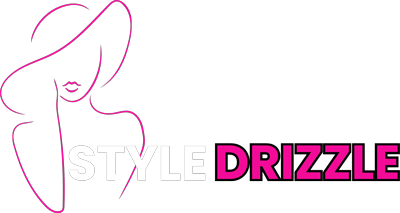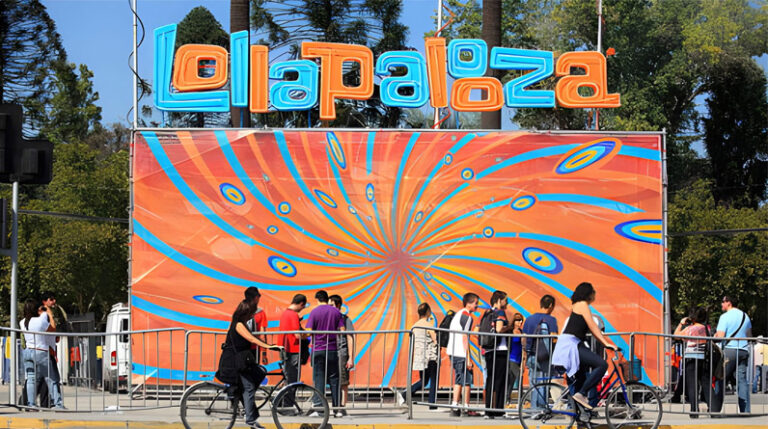When Perry Farrell, the frontman of Jane’s Addiction, conceived of Lollapalooza in 1991, he envisioned a farewell tour that would take his band across North America. What started as a 20-city tour featuring Nine Inch Nails, the Rollins Band, and Ice-T has since evolved into one of the world’s most prestigious and influential music festivals. Today, Lollapalooza stands as a testament to how a single creative vision can transform into a global cultural institution that attracts over 500,000 music enthusiasts annually.
The journey from a struggling touring festival to a thriving destination event in Chicago reveals a compelling story about resilience, adaptation, and the power of music to bring communities together. This article explores the multifaceted world of Lollapalooza, examining its transformation, current significance, and why it continues to captivate audiences worldwide.
The Origin Story: A Name Born from Pop Culture
The origin of Lollapalooza’s distinctive name is as unique as the festival itself. Perry Farrell discovered the word—an archaic term meaning “extraordinarily impressive”—in a Three Stooges film. This serendipitous discovery perfectly encapsulated Farrell’s vision for what the festival would become: an extraordinary gathering of musical talent that would leave lasting impressions on everyone who attended.
The initial 1991 tour was profitable and generated substantial buzz in the music industry. This early success prompted organizers to plan a second tour in 1992, where they introduced a multi-stage format that would become the blueprint for modern festival experiences. By 1997, Lollapalooza had visited numerous cities across North America, establishing itself as a premier touring festival.
The Struggle and Revival: A Testament to Perseverance
Like many bold ventures, Lollapalooza faced significant challenges. By the late 1990s, the touring model became financially unsustainable, leading to the festival’s cancellation in 1998. Attempts to revive it in 2003 and 2004 continued to struggle financially.
However, 2005 marked a turning point. Rather than continuing with the touring format, Farrell and his team made a strategic decision: transform Lollapalooza into a permanent destination festival in Chicago. This pivotal shift proved transformative.
The Strategic Move to Chicago
- 2005: Lollapalooza established as a two-day destination festival in Chicago
- 2006: Third day added due to overwhelming success
- 2016: Fourth day introduced to accommodate expanding lineup
- 2011: International expansion begins with festivals in South America
Held annually in Grant Park during early August, the festival’s new format proved immediately successful. The lakefront location, combined with Chicago’s vibrant cultural scene, created an ideal destination for music fans worldwide.
Lollapalooza by the Numbers: Impact and Reach
| Metric | Details |
|---|---|
| Annual Attendance | 500,000+ music fans |
| Musical Acts | 170+ performers |
| Performance Stages | 9 dedicated stages |
| Duration | 4 days (late July/early August) |
| Location | Grant Park, Chicago |
| Years in Chicago | 20+ years |
| International Locations | 6+ countries |
The Modern Lollapalooza Experience: Beyond Just Music
Diverse Lineup Across Multiple Genres
Contemporary Lollapalooza lineups represent an impressive cross-section of musical genres. The 2025 festival showcased headliners including Olivia Rodrigo, Tyler the Creator, Sabrina Carpenter, Luke Combs, and A$AP Rocky—demonstrating the festival’s commitment to featuring rock, hip-hop, pop, country, and electronic music on equal footing.
This genre diversity isn’t accidental; it reflects a deliberate programming philosophy that ensures attendees with varied musical tastes find compelling performances. The inclusion of 170+ acts across nine stages means concurrent performances, allowing festival-goers to craft personalized experiences.
Chow Town: A Culinary Destination
Recognizing that memorable festivals engage all the senses, Lollapalooza features Chow Town—an impressive culinary experience showcasing over 80 food vendors. Rather than relying on generic festival fare, organizers partner with Chicago’s most acclaimed restaurants and local favorites, including:
- Lou Malnati’s famous deep-dish pizza
- Tacotlan’s authentic birria tacos
- Soul Veg City’s innovative plant-based options
- The Tamale Guy’s classic tamales
- Billy Goat Tavern’s iconic burgers
- XO Marshmallow’s artisanal sweets
Chow Town sections—including Dessert Island, Plant Base, and Vibe Village—transform festival dining from mere sustenance into an integral part of the overall experience. This approach generates economic benefit for Chicago’s restaurant community while enhancing attendee satisfaction.
Kidzapalooza: Inclusive Family Entertainment
A distinguishing feature of Lollapalooza is its commitment to family accessibility. Kidzapalooza provides dedicated programming for young attendees, including music workshops, interactive art installations, and performances by child-friendly artists. Children aged 8 and under receive complimentary admission when accompanied by an adult.
This inclusive approach expands Lollapalooza’s cultural reach, introducing younger generations to live music experiences and fostering a lifelong appreciation for diverse musical genres.
The Ticket and Access Experience
Multiple Admission Options
Lollapalooza recognizes that attendees have varying budgets and preferences. The festival offers:
- 4-Day General Admission: Full festival access
- 4-Day GA+: Enhanced general admission experience
- 4-Day VIP: Premium amenities and exclusive lounges
- 4-Day Platinum: Ultimate luxury experience
- 1-Day Tickets: Single-day pass flexibility
Premium add-ons include official hotel packages, luxury cabanas, private transportation, and stage-side viewing areas. This tiered approach ensures accessibility while generating revenue from those seeking enhanced experiences.
Transportation and Logistics: Accessibility for All
Lollapalooza’s commitment to accessibility extends to transportation infrastructure. Grant Park’s downtown location provides multiple convenient access options:
- Public Transit: CTA buses and trains provide affordable, accessible transportation
- Parking: Millennium Garages offers multi-day parking with festival discounts
- Ride-Share: Uber, Lyft, and taxi services accommodate attendees
- Biking: Complimentary bike valet and secure parking available
- ADA Accessibility: Dedicated accessible entry points and parking
Legendary Performances: A Cultural History
Over its three-decade history, Lollapalooza has hosted some of music’s most iconic artists, cementing its status as a premier venue for legendary performances. Past headliners represent a pantheon of contemporary music:
- Red Hot Chili Peppers
- Radiohead
- Metallica
- Lady Gaga
- Daft Punk
- Kendrick Lamar
- Paul McCartney
- Ariana Grande
Each festival year introduces emerging artists alongside established names, ensuring Lollapalooza remains relevant while providing platforms for new talent. The 2025 festival exemplified this balance, featuring breakthrough artists like Wallows—who attended in 2013 as fans before performing in 2018 and headlining in 2025—demonstrating the festival’s role in nurturing careers.
The Aftershow Experience: Extending the Festival
For attendees seeking extended experiences or those unable to secure festival tickets, Lollapalooza’s official aftershow series extends the festive atmosphere throughout Chicago. Partner venues including Metro, The Vic, House of Blues, Lincoln Hall, and Schubas host curated performances from festival lineup artists, providing intimate concert experiences throughout the city.
Global Expansion: Lollapalooza Worldwide
Beginning in 2011, Lollapalooza expanded internationally, with festivals in South America and subsequently in six additional countries. This global expansion demonstrates how a distinctly American festival concept resonates with audiences worldwide, while allowing local customization for regional audiences and preferences.
Why Lollapalooza Matters: Cultural Significance Beyond Music
Economic Impact on Chicago
The festival generates substantial economic benefits for Chicago, attracting 500,000+ visitors who spend money on accommodations, dining, transportation, and merchandise. Hotels throughout downtown Chicago experience capacity constraints during festival weekends, reflecting the event’s tourism draw.
Platform for Emerging Artists
Lollapalooza’s multi-stage format with 170+ acts provides invaluable exposure for emerging artists. Side stages and dedicated performance spaces allow newcomers to reach audiences who might later become devoted fans, accelerating career trajectories for talented musicians.
Community and Connection
In an increasingly digital world, Lollapalooza provides rare opportunities for physical community gathering around shared musical interests. The festival fosters connections between strangers, creates lasting memories, and validates music as a unifying cultural force.
Planning Your Lollapalooza Experience
Before You Go
- Book accommodations early—downtown hotels fill quickly
- Review the full lineup and create a personalized schedule
- Purchase tickets through official channels
- Plan transportation in advance
- Check weather forecasts and pack accordingly
During the Festival
- Arrive early to secure good viewing positions
- Explore multiple stages—discover new favorite artists
- Take advantage of Chow Town’s diverse culinary offerings
- Participate in interactive installations and brand activations
- Respect fellow attendees and follow festival guidelines
Conclusion: Lollapalooza’s Enduring Legacy
From Perry Farrell’s initial vision in 1991 to its current status as a global cultural phenomenon, Lollapalooza’s journey exemplifies how adaptation, creativity, and community commitment transform ambitious ideas into lasting institutions. The festival’s evolution from a struggling touring concept to a thriving destination event in Chicago demonstrates the power of strategic decision-making and cultural relevance.
Today’s Lollapalooza represents far more than a music festival—it’s an economic engine for Chicago, a platform for emerging and established artists, and a gathering place where 500,000+ people annually connect through their shared passion for music. As the festival looks toward future editions, its commitment to inclusive programming, diverse lineups, and comprehensive attendee experiences ensures Lollapalooza will continue defining what modern music festivals can achieve.
Whether you’re a longtime attendee or considering your first Lollapalooza experience, the festival continues delivering on its foundational promise: an extraordinarily impressive gathering that leaves indelible marks on all who attend.


